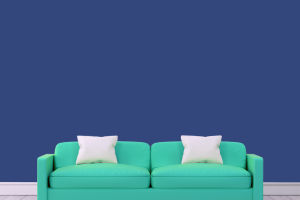Ceramic is an essential material in human life and production, and its development has gone through a process from simple to complex, from rough to fine, from unglazed to glazed, and from low to high temperature.
Today, we will appreciate together a few ceramic products to gain a more comprehensive understanding of ceramic materials and explore their potential applications.
One of the reasons why we focus more on the material texture and handcrafted feel of ceramic design today is a change in aesthetic tendencies. Another key point is that industrial mass production has made the complexity of images less tied to a high degree of craftsmanship.
As a result, ceramic design outside the traditional categories can also reflect a sense of sophistication.
Even some of the ancient works of the hall can't match the Etruscan-style porcelain designs from England (Etruria Work), which are still in production today and are more respected for their simplicity in color style and even more sophisticated in craftsmanship.
Even today, we do not feel that these porcelain vases are outdated in high style; they seem to be timeless, just like the ancient Greek art.
Europe has hundreds of years of history in ceramics, which has given birth to many historic and world-renowned famous brands. Today, we will take stock of some of Europe's famous ceramic brands.
Established in 1710, the Meissen porcelain factory in Germany is the oldest porcelain factory in Europe and one of the most famous porcelain manufacturers in the world, producing tableware, tea sets, porcelain dolls, other decorative items, and more.
Meissen porcelain has a wide range of styles, from the early Asian imitation style to the European style created in later years. The most famous and classic lines are the Royal B-Form dinnerware and the Blue Onion dinnerware.
Austria's Vienna Porcelain is a world-renowned porcelain brand, founded in 1716, and is the second oldest porcelain dealer in Europe after Meissen. The products include tableware, tea sets, decorative items, etc.
The classic series has Du Paquier period porcelain, usually with a large number of openwork, patterns with a variety of borders, plant and flower patterns, complex and exquisite.
After the neoclassical style of porcelain, delicate and bright painting style coupled with the use of a large number of gold, elegant and textured.
While some high-class porcelain factories have products with complex designs and high prices, they are not the only products with a sense of senior taste. For young people, the popular style from several generations ago is also considered senior.
More people believe that the sense of seniority should be the same as the so-called senior gray in fine art, which is a seemingly simple but distinctly identifiable shade. That is to say, the sense of seniority refers to the ability to induce a luxurious temperament in understatement and simplicity.
For example, ceramic products intentionally leaving flaws or showing off the traces of production give us a premium experience. The reasoning is not difficult to understand: imperfection makes the premium face more recognizable.
Modern ceramic designs that subtly balance the artificial traces and natural texture allow more people to experience the premium.
Ceramic is a versatile material that has been used for centuries in many aspects of human life and production.
The evolution of ceramic design has led to a greater appreciation of the material's texture and craftsmanship, which is reflected in modern ceramic designs.
Many famous ceramic brands in Europe, such as Meissen and Vienna porcelain, have a long history and continue to produce high-quality products. The sense of seniority in ceramic design is not necessarily tied to complex designs or high prices.
Instead, it can be achieved through understatement and simplicity, as evidenced by ceramic products intentionally leaving flaws or showing off the traces of production.


